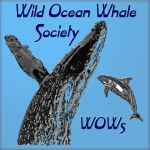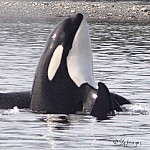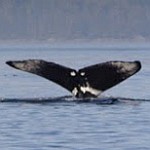Many of the whales, dolphins and porpoise found throughout the world can be seen along the coast of British Columbia. There are slight variations to some of the world’s marine mammal populations. For example the Pacific White Sided Dolphin has a similar species called the Atlantic White Sided Dolphin. Both species of these dolphins are just as gregarious and athletic as the other. For Killer Whales, or Orca, there are three known types throughout the world; Resident, Transient and Offshore. These types, by definition, give some insight as to where they are most likely to travel.
The BC coastline is incredibly long and varied. There are “inside passages”, “outside waters”, and millions of islands in between. And there are whales, dolphins and porpoises that travel all the waterways.
First, to clarify, whales, dolphins and porpoises are collectively known as Cetaceans, mammals that are adapted to aquatic life. The term Cetacea comes from the Latin Cetuswhich, by definition originally meant “large sea animal”. It’s adaptation and use in biological terms stands for “whales”. Some have teeth, some have baleen filters. These are defined with the specific whale information pages. Although there are other marine mammals adapted to aquatic life, they fall into other categories known as Pinnipeds for Seals and Sea Lions. And then there are the Otters, but that’s for another time.


